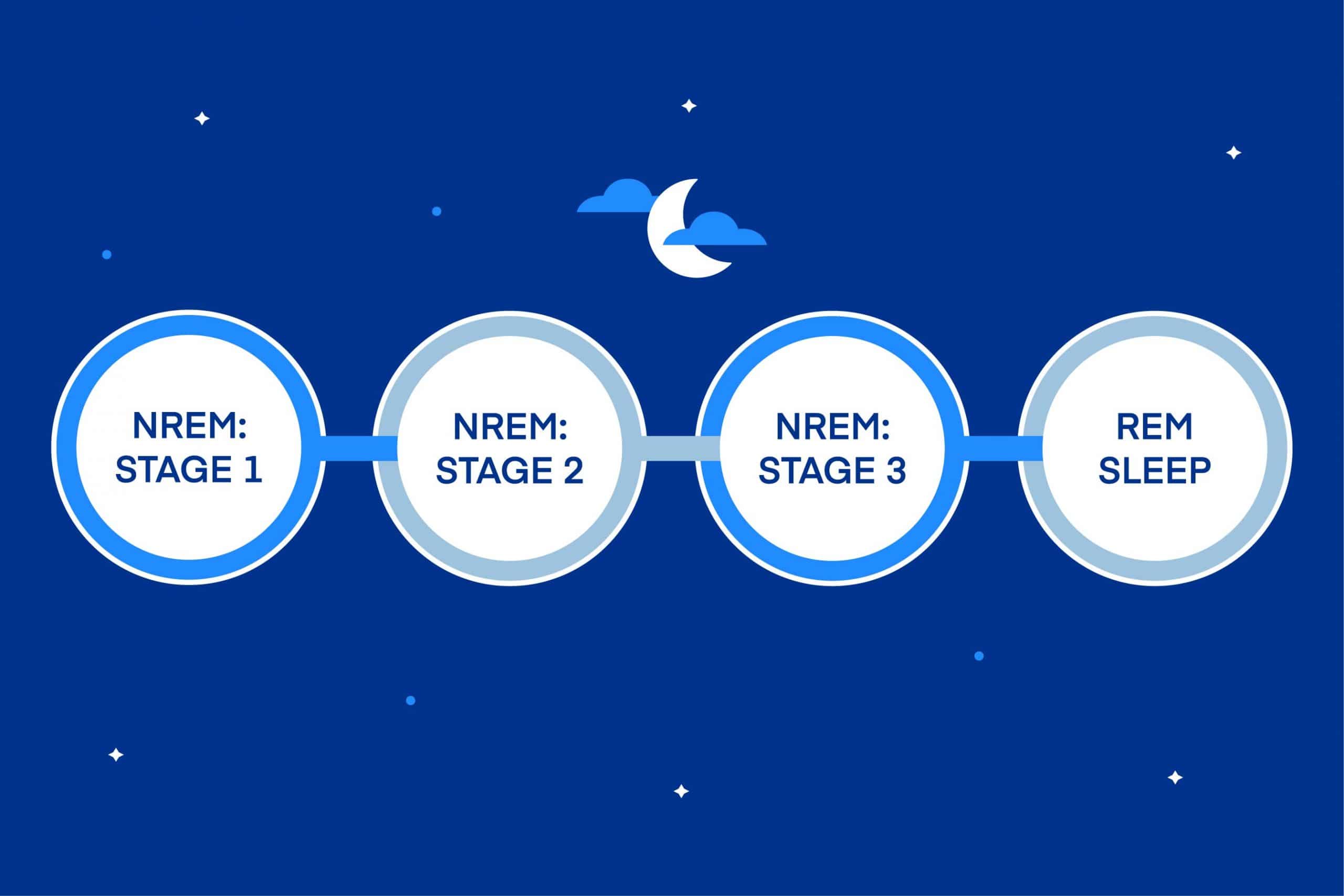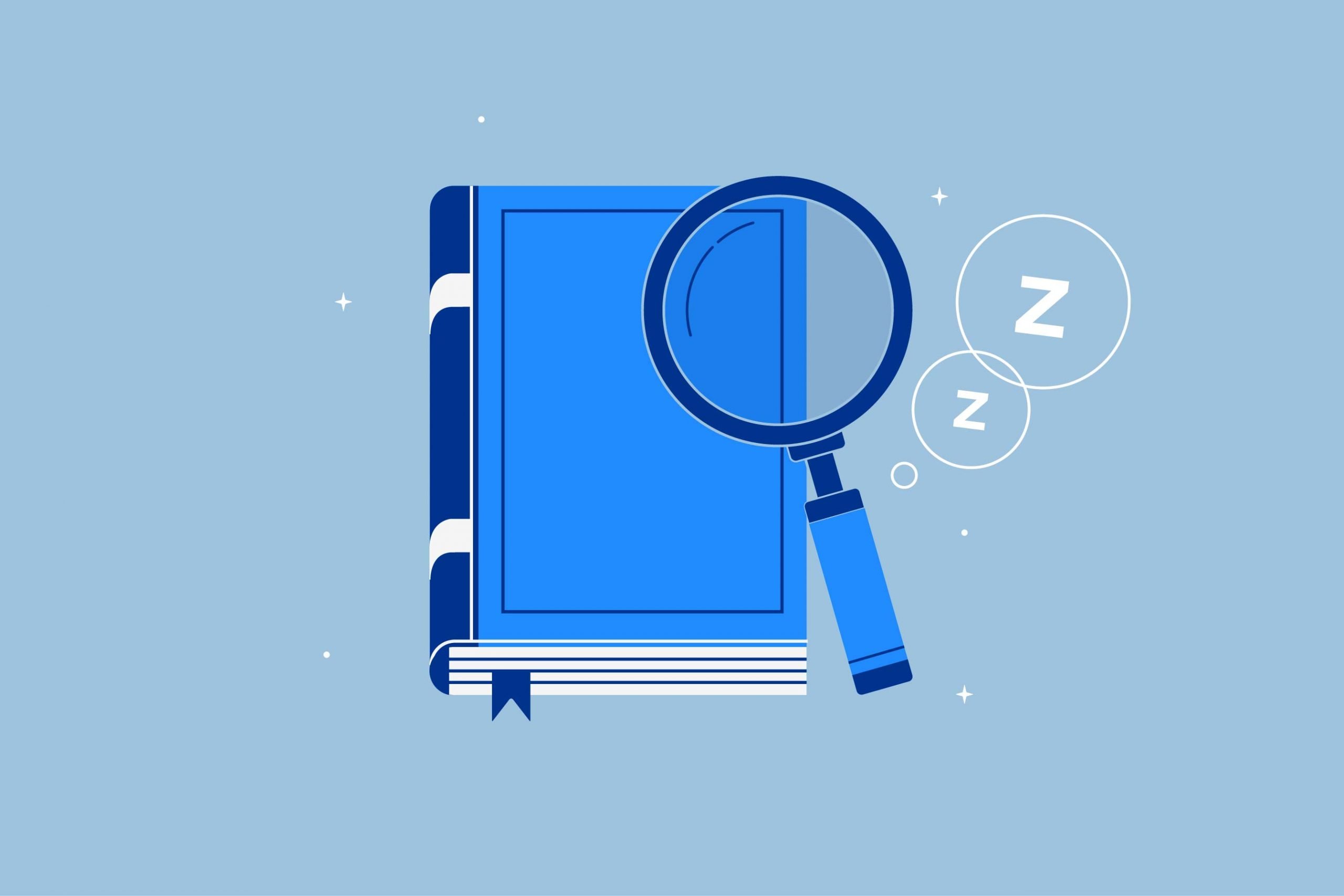Key Takeaways
- Essential Sleep Stages: Understanding the distinct stages of sleep, including non-REM and REM sleep, is crucial for comprehending the essential functions that occur during each stage. From the initial light sleep to the deep restorative sleep, and the vivid dreaming in the REM stage, these phases contribute to repairing the body, consolidating memories, and rejuvenating cognitive functions.
- Sleep Cycle and Age: Sleep patterns and the distribution of sleep stages change with age, particularly during developmental stages such as infancy, childhood, and adolescence. The proportion of deep sleep (Stage 3) and REM sleep varies across different age groups, reflecting the body’s varying requirements for physical and mental restoration at different stages of life.
- Health and Well-Being Impact: Sleep deprivation or a lack of sufficient time in each sleep stage can lead to adverse effects on cognitive function, memory consolidation, and overall physical health. Reduced sleep can result in feelings of tiredness, irritability, and impaired concentration, affecting daily productivity and emotional well-being.
You’ve likely been told that you need a full 7 to 8 hours of sleep each night to maintain proper physical and mental health. But why is that? If you can get by on 5 to 6 hours instead, why not try? How important is 1 to 2 extra hours of sleep to our overall well-being? Well, as it turns out, it is incredibly important.
The first step toward uncovering why sleep is so essential is understanding the four different stages of sleep. During sleep, we experience multiple sleep cycles. Each cycle is made up of four sleep stages—three non-REM stages and one REM stage.
As you cycle through each one of these stages, specific hormonal and neurological changes take place to repair and rebuild the body and mind. This vital downtime ensures you have everything you need to stay healthy and focused. Without enough time in each sleep stage, you will feel run-down, unfocused, and groggy. Plus, sleep deprivation can disrupt the nervous system and immune function.
To give you a clearer picture of the importance of sleep, we have outlined the specific functions of each sleep stage and how they work to keep you feeling your best.
Non-REM vs. REM Sleep
Before we cover the effects of each sleep stage, it is helpful first to understand the differences between rapid eye movement (REM) and non-REM sleep.
Stages 1, 2, and 3 are considered non-REM sleep because brain waves are slower, and muscles are relaxed during these stages. These stages are often referred to as “quiet sleep” because brain activity is slow. But, there are several vital functions taking place during all three non-REM stages.

REM sleep is known as “active sleep” because brain activity increases, and rapid eye movement begins. This is the stage of sleep where brain activity most resembles brain activity when you’re awake.
Four Stages of Sleep
Throughout the night, you will experience each of the four sleep stages with short moments of wakefulness as you transition between stages or cycles. Below, we outline the functions of each sleep stage on how they impact the mind and body.
NREM Stage 1
As you drift off to sleep, you are still somewhat alert. During light sleep, you may be aware of your surroundings and wake up quickly to small noises or movements. As the mind begins to relax, it produces Alpha waves, sometimes called “quiet wakefulness.” During Stage 1, you may experience strange, almost hallucinogenic sensations such as falling.
In Stage 1, eye movement and brain wave activity slow, and muscle tension decreases. When the muscles become fully relaxed, you may experience hypnic jerks or short muscle spasms. This stage lasts around 5 to 10 minutes. Toward the end of Stage 1, Theta brainwaves begin and help to induce a deeper sleep.
NREM Stage 2
During Stage 2, the brain waves continue to slow, and eye movement decreases. This stage lasts about 30 to 60 minutes, and you will gradually become unaware of your surroundings and less likely to wake up. As your body temperature and heart rate drop, your muscles continue to relax and release tension.
Both K-complexes Verified Source National Library of Medicine (NIH) World’s largest medical library, making biomedical data and information more accessible. View source and sleep spindles Verified Source National Library of Medicine (NIH) World’s largest medical library, making biomedical data and information more accessible. View source become active during this stage. During periods of wakefulness, K-complexes respond to environmental stimuli. But, during sleep, these waveforms help you sleep undisturbed even when there is light, noise, or movement. Sleep spindles are burst brain waves that produce a rhythmic activity in the mind. This slow activity helps reduce external sensory stimuli so you can sleep soundly.
NREM Stage 3
Stage 3, also referred to as “deep sleep” or “slow-wave sleep” (because of the slow delta brain waves it produces) lasts between 20 to 40 minutes. This stage is considered to be the most restorative because the brain cleanses itself of toxins. Plus, Human Growth Hormone (HGH) works to repair muscle tissue. Memory consolidation takes place in this stage—transferring relevant information from short-term to long-term memory.
There is very little muscle activity or eye movement, and the body is slack and relaxed in Stage 3. Blood pressure and respiratory rates also drop, and sleep disruptions are infrequent. It can be difficult to wake someone during this stage. If your sleep is disrupted in Stage 3, you will likely feel irritable and disoriented.
Deep sleep is also the stage in which some parasomnias can occur, according to sleep psychologist Dr. Jade Wu, Ph.D. “These sleep disorders include sleep-walking, sleep-eating, and night terrors,” Dr. Wu explains, “which are not uncommon (and usually harmless) in children. In adults, these are much rarer and are good symptoms to ask your doctor about.”
In addition to being the most restorative stage, Stage 3 is also the most restful. The more time you spend in this stage, the more your need for sleep decreases. If you take a quick nap during the day, you may still be able to fall asleep at night—this is because you may not have experienced enough time in Stage 3. But, if you take a longer nap, you may have trouble falling asleep when it’s time for bed because you already experienced enough deep sleep.
REM Sleep
REM sleep is also known as “Paradoxical Sleep” because, while the body is immobilized, brain activity increases during this stage. Brain waves during REM are low amplitude and more active than non-REM sleep, and you will have rapid eye movements. The eyes move in a quick side to side motion, and the eyelids may flutter. Breathing also becomes quick, shallow, and irregular, and body temperature drops to its lowest point.
In the first half of the night, REM sleep may only last about 10 minutes, but each time you enter REM during the night, the duration becomes longer. The majority of your REM sleep happens in the second half of the night.
The increase in brain activity during REM also causes vivid dreaming. Although we may not always remember them, we experience between four to six dreams a night. When we wake during REM sleep, our dreams are often the clearest. But, if we fall asleep again, we may lose the impression of the dream.
The muscle paralysis that takes place in REM prevents us from acting out these vivid dreams. But, the immobility of the body can make symptoms of Obstructive Sleep Apnea or other sleep disorders worse. When the muscles relax fully, they may put pressure on the airways—making it difficult to breathe normally.
What Is a Sleep Cycle?
As we mentioned above, the four sleep stages make up one sleep cycle. It takes about 90 to 120 minutes to complete one full cycle. Since the average adult sleeps about 7 to 8 hours per night, you will experience four to five cycles in that time.
However, it is helpful to note that sleep stages are not necessarily linear. REM sleep can take place at any time within the sleep cycle, and we may not always start a cycle at Stage 1. Also, a cycle may not transition from stage 3 to REM automatically. Instead, we may experience all three phases of non-REM sleep and then revert to Stage 2 before entering REM.
For most people, REM sleep begins 90 minutes after falling asleep. After REM sleep, we typically start over in Stage 1 or 2 and new cycle beings.
A typical sleep cycle will start with Stage 1 or 2 and progress through Stage 3. Throughout the cycle, intermittent periods of wakefulness and REM will take place. REM periods will be shorter at the onset but will gradually increase with each new cycle.
How Does Your Sleep Cycle Change with Age?
As you age, the amount of time you spend in each sleep stage will change. Below, we explain the sleep variations associated with each age. This outline will give you a better understanding of the time you will spend in each sleep stage.
Babies (0 to 12 months): In newborns, sleep brain waves are not distinctive. Therefore, sleep stages for newborns are considered either Active, Quiet, or Indeterminate. Periods of Active sleep are similar to REM sleep, while Quiet rest is similar to non-REM sleep. In general, newborns remain in Active sleep and frequently wake for feedings. Their sleep needs slightly decreases in the first year of life from about 16 hours to 14 hours per 24 hours, and they begin to develop distinct stages of sleep.
Toddlers (1 year to 3 years): Once children turn 1, their sleep patterns become developed. Between 1 and 3 years of age, children spend about 25 percent of their sleep in Stage 3 and 25 percent in REM. Since toddlers sleep about 11 to 14 hours in 24 hours, they experience more deep and REM sleep.
Pre-School and School Age (3 to 12 years): Similar to toddlers, preschoolers, and school-age children will spend most of their sleep time in Stage 3. These children need about 9 to 13 hours of sleep (the younger they are, the more they need). As the body grows, it will crave more time in Stage 3.
Adolescents through Adulthood (12 years and beyond): Adolescents will sleep about 9 hours per night. But, once they reach young adulthood, this number may decrease to 7 or 9 hours a night. At age 12, sleep patterns will become similar to adult patterns, with the largest percentage of sleep taking place in Stages 2 and 3.
Conclusion
As busy adults, we often sacrifice sleep to squeeze more into our day. Whether it’s to get more work done or to have more time to socialize, we don’t always prioritize sleep. But, as you can see, cutting your rest short results in less time in each one of the vital sleep stages. Each stage is needed to restore cognitive function, improve memory, and restore muscle tone. A good night’s sleep will leave you feeling rejuvenated, more relaxed, and ready to tackle the day.
About the author
Sanchita Sen is a full-time writer focusing on the sleep health and mattress industry. She is a former journalist who has written numerous articles on the healthcare sector. Some of the topics she has covered include how to lucid dream, fever dreams, melatonin for sleep, and best gel memory foam mattress. Sanchita holds a Master of Arts in Communications from Convergence Institute of Mass Media and Information Technology Studies. She is also a published author, who seeks inspiration from both real life and the world of fiction.
View all posts





